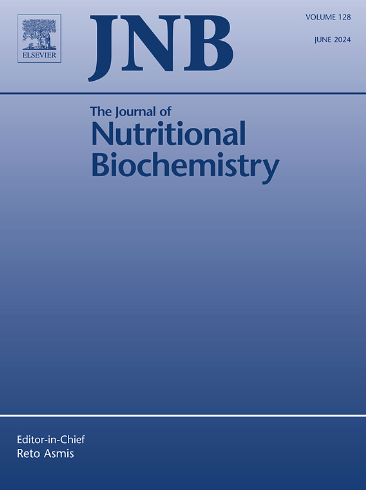Correlation of serum trace elements with clinical features and gut microbiota in patients with Crohn's disease
IF 4.9
2区 医学
Q1 BIOCHEMISTRY & MOLECULAR BIOLOGY
引用次数: 0
Abstract
Changes of several trace elements have been reported to contribute to the pathogenesis of Crohn’s disease (CD), which is associated with gut microbiota imbalance. This study aimed to investigate changes in trace elements in Chinese CD patients, and explore the correlation of trace element status with clinical features and gut microbiota. Eighty CD patients and 45 healthy volunteers were enrolled between July 2022 and November 2022. Serum zinc, copper, magnesium and selenium were measured by inductively coupled plasma mass spectrometry. The nutritional status was assessed based on body mass index and albumin and disease severity was determined according to the Crohn's disease activity index and C-reactive protein. Fecal gut microbiota was analyzed using 16SrRNA gene sequencing. Compared with healthy controls, serum copper increased, but serum selenium reduced in Chinese CD patients. The serum levels of selenium and magnesium were positively related to nutritional status, and the serum levels of selenium and copper were associated with disease severity. Selenium deficiency in CD patients was closely related to the diversity and abundance of gut microbiota. The serum levels of several trace elements change in the CD patients and are associated with nutritional status and disease severity. Selenium deficiency in CD patients is associated with the diversity of gut microbiota, suggesting an interaction between trace elements and gut microbiota.

克罗恩病患者血清微量元素与临床特征及肠道菌群的相关性
几种微量元素的变化已被报道与克罗恩病(CD)的发病机制有关,而克罗恩病与肠道菌群失衡有关。本研究旨在了解中国CD患者微量元素的变化,并探讨微量元素状况与临床特征和肠道菌群的相关性。方法:在2022年7月至2022年11月期间招募了80名CD患者和45名健康志愿者。采用电感耦合等离子体质谱法测定血清锌、铜、镁、硒。根据体重指数和白蛋白评估营养状况,根据克罗恩病活动性指数和c反应蛋白确定疾病严重程度。采用16SrRNA基因测序法分析粪便肠道菌群。结果:与健康对照相比,中国CD患者血清铜含量升高,血清硒含量降低。血清硒和镁水平与营养状况呈正相关,血清硒和铜水平与疾病严重程度相关。乳糜泻患者硒缺乏与肠道菌群的多样性和丰度密切相关。讨论:几种微量元素的血清水平变化在乳糜泻患者,并与营养状况和疾病的严重程度有关。乳糜泻患者硒缺乏与肠道菌群多样性有关,提示微量元素与肠道菌群之间存在相互作用。
本文章由计算机程序翻译,如有差异,请以英文原文为准。
求助全文
约1分钟内获得全文
求助全文
来源期刊

Journal of Nutritional Biochemistry
医学-生化与分子生物学
CiteScore
9.50
自引率
3.60%
发文量
237
审稿时长
68 days
期刊介绍:
Devoted to advancements in nutritional sciences, The Journal of Nutritional Biochemistry presents experimental nutrition research as it relates to: biochemistry, molecular biology, toxicology, or physiology.
Rigorous reviews by an international editorial board of distinguished scientists ensure publication of the most current and key research being conducted in nutrition at the cellular, animal and human level. In addition to its monthly features of critical reviews and research articles, The Journal of Nutritional Biochemistry also periodically publishes emerging issues, experimental methods, and other types of articles.
 求助内容:
求助内容: 应助结果提醒方式:
应助结果提醒方式:


